The post Top 10 Things to Do in Rio de Janeiro appeared first on The Expeditioner Travel Site.
]]>
From all holidays in the sun, Rio de Janeiro in Brazil might be the one with the most activities to partake in. With its vibrant nightlife, iconic attractions and one of the seven wonders of the world, the city, which was once the capital of Brazil, has a lot to offer travelers from all different tastes.
1) Museu do Amanhã (Museum of Tomorrow)
Designed by the neo-futuristic architect Santiago Calatrava, the applied science museum aims to create an open dialogue about the next 50 years. It takes in consideration all of man’s alteration of the world in its primary state while emphasizing ethical values and shining light on issues that need our urgent attention. Aside from the expositions available, the museum also hosts year-round classes, workshops and discussion panels.
2) Parque Lage
Designed by English landscaper John Tyndale back in 1840, this park is surrounded by the Atlantic Forest and is located at the bottom of Corcovado mountain. Easily accessible to the general public, the park is also known as a cultural hotspot by locals, as it houses a 14th-century house turned into a visual art school. A popular place to take pictures or have a romantic brunch is at Bistrô Plage, located in the mansion’s central patio by the pool.
3) Hang Gliding
For the sports aficionado, hang gliding will be an exciting and unforgettable activity filled with the best views from above.
As one of the most popular wind sports in the city, there are a lot of reliable companies which you can hire hang gliding equipment from. The ones situated in Pedra Bonita have the easiest access, being only 20 minutes from the Ipanema beach, and are known for having the best views. During this experience, remember to wear comfortable clothes, sunscreen and avoid taking big bags.
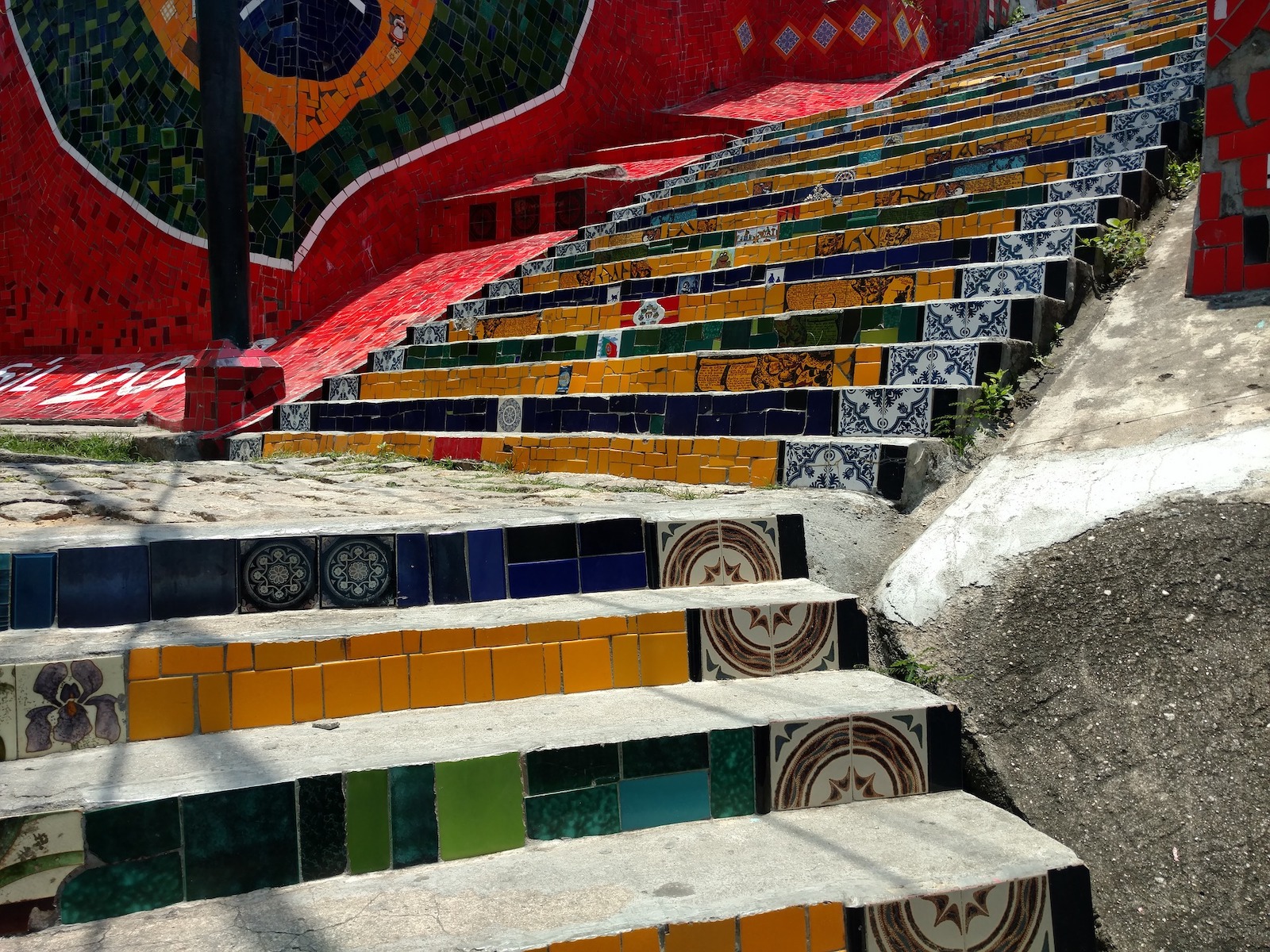
4) Escadaria Selarón (Selarón’s Steps)
Jorge Selarón, a Chilean-born ceramist, immigrated to Rio de Janeiro in the 1980s. Years later, in 1990, he decided to decorate the staircase near his house – which connects the Lapa neighborhood to the Santa Teresa neighborhood – as a tribute to Brazilians.
The staircase took 20 years to be completed and is made out of tiles and porcelain donated by Jorge’s friends and supporters. The landmark of 215 steps and the wall of both sides are decorated with painted tiles, now known as one of the most popular postcards of the city.

5) Maracanã Stadium
Officially called Jornalista Mário Filho Stadium, the soccer stadium is the most famous and largest in the country. Specially built for the 1950’s FIFA World Cup hosted in Brazil, the stadium got its nickname due to its location, the Maracanã neighborhood.
The historic stadium is known for many matches and moments of soccer history, but the most iconic one might be the 1,000th goal of soccer player Pele’s career. The stadium offers tours, but the best way to enjoy the place is by watching a soccer match, as soccer is one of Brazil’s biggest passions.

6) Lapa’s Nightlife
The Lapa neighborhood is known for being the center of Rio’s nightlife. When in Lapa, some of the must-do’s are watching a concert at Circo Voador, going for drinks at Bar da Boa, enjoying great Brazilian music and partying all night at the nightclub Lapa 40 Graus.
7) Ipanema Beach
The most famous and iconic beach of Rio de Janeiro (maybe the world), is responsible for inspiring the Brazilian song “Garota de Ipanema.”
The beach is the best place to take the perfect beach vacation pictures, especially at the Arpoador, the large rock that separates the Ipanema and Copacabana beach. At Station 9, many tourists and locals get together to watch the sunset, an experience which always ends with applauds from the public.
8) Irajá Gastrô
Opened in 2011, the restaurant with dishes by Chef Pedro de Artagão and drink menu by Julieta Carrizzo, offers the perfect pairing between food and drink. The restaurant only works with fresh and sustainable ingredients and has a cozy environment; the perfect place to go should you start to feel homesick or you’re simply looking for great food.
9) Sugarloaf Mountain
The Sugarloaf Mountain is made up of three hills: Sugarloaf, Urca and Babilônia. To get to the top, you can hike a trail or take the aerial cableway. The view along the hiking trails and on top of the mountain are both breathtaking, one of the best you will see during your lifetime. To get the most out of the experience, choose to go around 5 p.m. so you can watch the day transition from day to night.

10) Christ The Redeemer
Hands down the most popular tourist attraction to see in Rio, the Christ The Redeemer statue is an Art Deco masterpiece created by the French sculptor Paul Landowski. It was built by Brazilian engineer Heitor da Silva Costa and French engineer Albert Caquot, with the facial features fashioned by Romania’s Gheorghe Leonida. The sculpture was finished in 1931, eventually becoming one of the 7 Wonders of the World in 2006. You can enjoy a picturesque view from a few parts of town or get on the Corcorvado train to reach the top. If you plan on getting the train, make sure to purchase the tickets in advance as lines to purchase tickets can take hours.

/
 Victoria Oliveira is a writer and translator from São Paulo, Brazil. Her first published article was for an international publication at the age of 14. She has since written for Matador Network, Youthgasm, The Culture-ist, and Elegant Magazine. She’s in love with desserts, learning new things, and exploring new places.
Victoria Oliveira is a writer and translator from São Paulo, Brazil. Her first published article was for an international publication at the age of 14. She has since written for Matador Network, Youthgasm, The Culture-ist, and Elegant Magazine. She’s in love with desserts, learning new things, and exploring new places.
The post Top 10 Things to Do in Rio de Janeiro appeared first on The Expeditioner Travel Site.
]]>The post Is There Anywhere Better To Shoot Video Than Brazil? appeared first on The Expeditioner Travel Site.
]]>In honor of the World Cup wrapping up this weekend, I thought I’d feature this amazing compilation travel video from Brazil (as if the seemingly never-ending parade of enviable panoramic shots of Copacabana Beach and aerial views from Christ the Redeemer that have blanketed the airwaves recently haven’t already caused every sane person who hasn’t been to Brazil to scramble to their computer to check airfare prices to the country).
Made by videographer Tom Pinsard, this beautiful video was shot while Tom and his girlfriend were in Brazil for two weeks during the World Cup (they were wrapping up a six-month trip around Asia and South America).
Amazing footage as it is, unfortunately for us (and, well, Tom), one of his cameras was stolen while in Brazil, so he had to make do with the video he had already captured.
For those wondering, the video was shot using a combination of the Panasonic Lumix DMC-GH3, Sony Cyber-shot DSC-RX100 II and GoPro 3.
[Brazil by Tom Pinsard via Vimeo]

/
 Matt Stabile is the founder and Editor-in-Chief of TheExpeditioner.com. You can read his writings, watch his travel videos, purchase the book he co-edited or contact him via email at any time at TheExpeditioner.com.
Matt Stabile is the founder and Editor-in-Chief of TheExpeditioner.com. You can read his writings, watch his travel videos, purchase the book he co-edited or contact him via email at any time at TheExpeditioner.com.
The post Is There Anywhere Better To Shoot Video Than Brazil? appeared first on The Expeditioner Travel Site.
]]>The post Greetings From Brazil [Travel Video] appeared first on The Expeditioner Travel Site.
]]>Heading to the World Cup in Brazil next month? Yeah, me neither, although any and all invitations that include a spot on a couch in someone’s rented house and/or an extra seat on their jet to get down there are welcomed and highly encouraged here at The Expeditioner HQ.
To get you in the mood for all the envious social media photos and TV footage you’ll be seeing during the games, check out this fun video from the Delinquent Valley crew, entitled “Greetings from Brazil,” featuring some great, intentionally retro-ized footage from the country.

/
 Matt Stabile is the founder and Editor-in-Chief of TheExpeditioner.com. You can read his writings, watch his travel videos, purchase the book he co-edited or contact him via email at any time at TheExpeditioner.com.
Matt Stabile is the founder and Editor-in-Chief of TheExpeditioner.com. You can read his writings, watch his travel videos, purchase the book he co-edited or contact him via email at any time at TheExpeditioner.com.
The post Greetings From Brazil [Travel Video] appeared first on The Expeditioner Travel Site.
]]>The post 49 Unforgettable Pictures Of Carnival appeared first on The Expeditioner Travel Site.
]]>
Last Sunday saw the giant mass of sweaty, jiggling, sambaing humanity that is Carnival in Rio de Janeiro, a must-see bucket list entry for every traveler.
For just a small taste of what it might be like to attend the parade at the Sambadrome Marquês de Sapucaí (capacity 90,000), check out the Daily Mail’s photo collection of 49 colorful photos from the event, some of which I would highly suggest you not view while at work or in the presence of small children (or, for that matter, anyone prone to epilepsy).
And if you really want to get a sense of what it might be like to be there, visit Google Maps which apparently sent one of their video cars down the parade during Carnival, to let you see the route from street level. Click here to samba your way down the parade route.
[Photo courtesy of AP via Mail Online]
The post 49 Unforgettable Pictures Of Carnival appeared first on The Expeditioner Travel Site.
]]>The post Michael Palin: The Greatest British Traveler Of Our Age? appeared first on The Expeditioner Travel Site.
]]>
Everyone’s favorite ex-Monty Python member turned traveler turned three-year term as president of the Royal Geographical Society, Michael Palin, is back with a new travel series, Brazil With Michael Palin, which recently began airing on the BBC, and hopefully coming to a local station (or Netflix) soon. Palin, who long ago could have rested on his Python laurels and retired to the Costa Brava like so many of his compatriots, had decided long ago to forge a new career path, that of a traveler, and has improbably turned himself into, as one British newspaper called him, “the great British traveler of our age.”
In a recent interview with the UK Independent, Palin describes how his newest series in Brazil was a change from his normal format in that he focused solely on one country over four episodes, whereas in the past he focused on particular themes to dictate his travels (Around the World in 80 Days, Hemingway, New Europe). “I’ve never done a series in one country before. I’ve often thought that we travel too fast . . . I felt with Brazil there would be a chance to get to know the country because we were going back there four times, filming over a period of a year. Each time we went back, it was like going back to a different country because it was all so different.”
And lest you think someone who achieved fame and wealth so early in life had little to learn about the world come the age of 46 when he filmed his first travel series, think again. Travel, it seems, affects everyone in profound ways, fame or no fame.
It’s a bit like when you’ve bought a car and you suddenly see everyone on the road has the same car as you. You notice things related to where you’ve been. Lots of places in the world mean more to me now than they would if I hadn’t been there. I went to Pakistan just after 9/11 and you thought you’d probably be beaten up on the street — but not at all. They want to know about you, why you’re there; you’re not armed therefore not a threat. You can go to most countries and find that people are operating on the level of human contact — they have families, they have children, they want to get their food from the market, simple things that we all do — and that’s what keeps the world going.
For those of us not in the U.K., rest assured, his entire travel back catalog is available on Netflix.
The post Michael Palin: The Greatest British Traveler Of Our Age? appeared first on The Expeditioner Travel Site.
]]>The post In Search Of The Real Lost World: Scaling Mount Roraima appeared first on The Expeditioner Travel Site.
]]>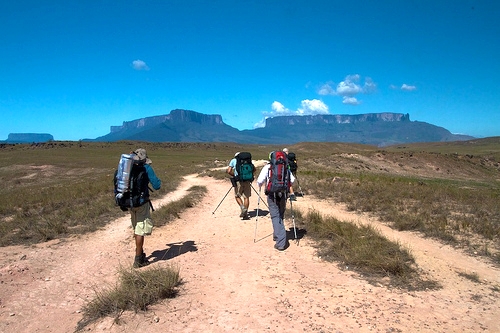
My trek the top of Mount Roraima was an accidental adventure. Serendipitous? Yes. Rewarding? No doubt about it. However, there were times when I would have given anything to be anywhere other than on that mongrel of a mountain in Venezuela.
A table-top mountain or mesa — synonymous with this part of South America — Mount Roraima rises an imposing 9,210 feet above sea level. Though nestled in Venezuela’s southeastern corner, part of the mountain crosses the border into nearby Brazil and Guyana.
Before deciding to make the trek, I found myself one day sitting in an Internet cafe in the small Venezuelan town of Santa Elena de Uairén. I had just come from Brazil whose border lies just 9 miles away. I arrived with very few remaining Brazilian reals and only enough U.S. dollars to get by for a day or two. New country, new currency, no problem — I’ll just go to an ATM and withdraw some Bolívars. Now, while that is entirely feasible, it is not especially wise. Changing money at the black market rate on the street gives you just about double the buying power.
So, scaling a demanding mountain to reach a so-called “lost world” (Mount Roraima is said to have inspired Arthur Conan Doyle’s The Lost World) was not at the forefront of my mind. However, it was the focus of the guy sitting next to me. Enter Katzi, an affable Austrian who asked me whether I would be at all interested in joining him and his girlfriend in climbing Roraima independently. That is, not with a tour company that would hire local porters to shoulder the burden of carrying food, cooking equipment, tents and all other manner of paraphernalia that weighs one’s pack down.
Katzi eagerly explained that by carrying our own gear and hiring a local guide on our own, we would save a considerable amount of money. While I barely had a Bolívar to my name and hadn’t even considered climbing the imposing mountain, the idea of saving money was an appealing one. After looking at some images of the spectacular mountain online I was sold, provided I could sort out my currency (or lack thereof) dilemma. The seed of new adventure was sown.
*
Before the adventure could start I had to spend a day going back and forth between Venezuela and Brazil, hitching rides with Brazilians filling their tanks with dirt-cheap state-subsidized gas, visiting banks and arousing the suspicion of heavily armed Venezuelan soldiers guarding the border. Finally, though, I had some Venezuelan money in my pocket.
The following day we were ready to begin our quest. At 6 a.m. we took off from Santa Elena for Paraitepui, a small, indigenous village that serves as the main starting point for hikers.
When Katzi and I set off we were joined by his girlfriend Cynthia, and our guide Antonio, a proud father of a son born just the day before. The pack on my back was heavy but it felt good and I tackled the first stretch of the path with optimism and vigor. The only hiccups in the early stages were a few physically harmless falls on the slippery path that left me muddy and a tad miffed.
All in all the first day was successful. The most challenging part of the day came during the second river crossing. While the water was only waist high, the current coupled with the heavy pack upsetting my balance made it a difficult proposition. The surroundings were scenic and lush, expected of a terrain where it rains every day on average. By the end of the day we finally arrived at our camp for the night with the knowledge that the next day would be the true test of our mettle.
*
We set off early on day two, and after a few hours we arrived at the Roraima base camp where the path changed dramatically. We now found ourselves in the midst of jungle on a narrow, steep and rocky path. As we began to navigate some particularly steep parts of the trail, I started to question what I had gotten myself into and how on earth we were going to be able to come down this same way without breaking our necks or any other important parts of our bodies.
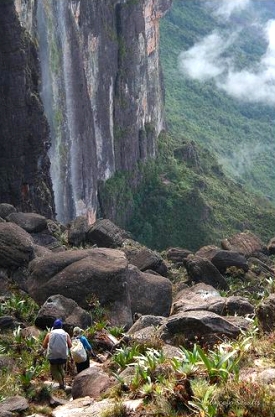
Luckily for us, the weather was clear; rain would have only made the path even more treacherous. As we took a lunch break on the narrow trail, I mention this to Katzi and Cynthia. I spoke too soon. Torrential rain began within the minute and my half-eaten tuna sandwich suddenly turned very soggy.
The next section of the path demanded the ascent of a running creek that flowed down the steep side of the mountain, crossing under sheer-drop waterfalls. Drenched to the bone and with my pack weighed down even more from absorbing the rainwater, the journey suddenly became a true strength of mental and physical fortitude. I told myself to be strong and push myself to make it to the top, while my sense of logic suggested that it would be quite a miracle if I actually did.
I pushed on, focused on conquering this beast of nature. By that time I was on my own; there was no one else nearby to offer advice or support. It was me verus the mountain in the truest sense.
Finally, after several more hours of surviving the crushing rain and pushing the strained muscles in my legs, we arrived at the peak of Roraima in one piece, and the only feeling I had at that moment despite everything was euphoria. The rain continued to fall, so we took shelter under a boulder offering some protection.
Later, we made our way to an existing campsite to pitch our tents and settle into our home for the evening. Thought we wanted nothing else, the incessant rain and thick fog prevented any possibility of ours in exploring the peak in an effort to garner some reward for our hard labor.
Instead, we retired to our tents for some much-needed rest.
*
The following day the weather still had’t improved, and a thick fog was blanketing the peak. Despite this we set out to explore a little of the moon-like landscape. Antonio, our guide — who didn’t seem particularly interested in guiding during the first couple of days and was indeed largely superfluous to our needs — was suddenly of much value as he guided us to various points of interest on Roraima’s intriguing tabletop.
Narrow canyons, unique endemic flora and fauna such as lizards, birds, frogs and carnivorous plants added to the mysticism of the unique place. However, our exploration was cut short when heavy rain once again reared its ugly head and we were forced to scurry back to the safety of camp.
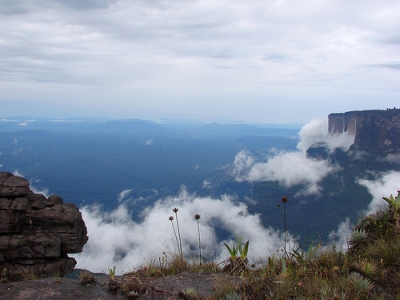 The highlight of the entire trek came early the next morning. We awoke to completely clear skies and set off shortly after sunrise to la ventana — a famed lookout spot on the mountain — to experience the most spectacular of views across the thickly forested valleys surrounding Roraima. Supreme and sheer beauty surrounded us. We stood perched on the edge of this lost world peering over the edge, admiring the splendidness of the vistas, in awe.
The highlight of the entire trek came early the next morning. We awoke to completely clear skies and set off shortly after sunrise to la ventana — a famed lookout spot on the mountain — to experience the most spectacular of views across the thickly forested valleys surrounding Roraima. Supreme and sheer beauty surrounded us. We stood perched on the edge of this lost world peering over the edge, admiring the splendidness of the vistas, in awe.
Spellbound and satisfied, we made our way back to camp to pack up and begin the descent. En route, however, Katzi and I couldn’t miss the chance to refresh ourselves in the freezing natural springs on top of the mountain. We hoped it would give us the required vigour to successfully negotiate the descent. Cynthia chose not to join us.
The way down proved to be as challenging as I had thought. I was more than ready to get back to civilization, but just as the ascent is a two-day affair, so is the descent. This time, Antonio, decided to forge ahead of us at a cracking pace in order to get to a camp where he could get a meal.
After the heavy rain of the past couple of days, the more challenging of the river crosses was impassable. We had no choice but to prematurely end the day, camp on the far side of the river and hope and pray that we would be able to cross the next morning.
Luckily, overnight, the river subsided sufficiently to enable our passage. We finished the last day of the trek with still quite a distance to cover. With the heavy rain the path was even slipperier that it was on the previous days, and I found myself spending quite a bit of time on the ground. At one point I burst into hysterics, swearing at the muddy path — the only reaction I could muster to my repeated slides and consequent tumbles.
My ankles began to swell to a point where a stuffed Christmas turkey would look lean in comparison to their plumpness. I began to sing to pass the time and dream of the moment when we arrived back. Finally, after hours of soul-searching and coaxing of my own will, we made it back to where it all started.
A large group of trekkers were already there ahead of us, eating a hot meal provided by their tour company. They looked utterly exhausted, despite not having to carry their food and sleeping equipment. We earned their instant respect when I told them that we had completed the journey unassisted in this way.
A kind German woman who seemed particularly affected approached me and offered me the remainder of her hot meal. I accepted gratefully and leaned back, eating, in bliss.
By Peter W. Davies
[Mount Roraima by Paulo Fassina/Flickr; La Ventana by Zahylis Zambrano /Flickr]

About the Author
 Peter W. Davies is an Australian writer and teacher currently living in Mexico City. He has traveled extensively and lived in Latin America for the past 2 years. His feet are still itchy (metaphorically) and his writing/typing hand(s) are just warming up.
Peter W. Davies is an Australian writer and teacher currently living in Mexico City. He has traveled extensively and lived in Latin America for the past 2 years. His feet are still itchy (metaphorically) and his writing/typing hand(s) are just warming up.
The post In Search Of The Real Lost World: Scaling Mount Roraima appeared first on The Expeditioner Travel Site.
]]>The post Climbing Rio’s Sugar Loaf James Bond Style appeared first on The Expeditioner Travel Site.
]]>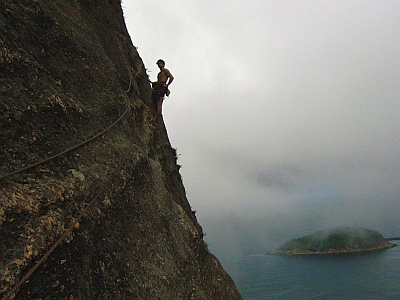
I had been enchanted with Sugar Loaf Mountain ever since I saw it in the 1979 James Bond film Moonraker, in which Bond battles with Jaws on a cable car traveling up Rio de Janerio’s most famous landmark (along with the Christ the Redeemer statue that sits at its top).
The grey granite massif that rises roughly 1,300 overlooking Copacabana beach is a formidable climb, and I decided then and there that I would climb up its face someday. I am skilled rock climber, but when I found out the Brazilian Mountaineering Club had installed a 900-foot via ferrata cable (a fixed climbing path for you non-climbers) called the “CEPI Route” up the west face of Sugar Loaf, I was excited. This crazy feat of engineering, a lifelong desire, and the uniqueness of the route immediately appealed to me.
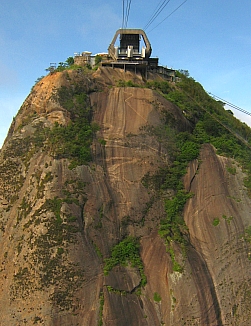 During a trip through South America, Carole, my life partner, and I decided to finally take on Sugar Loaf. We arrived on a hot, sunny morning, and after our third coffee we hailed a cab to Praia Vermelha where the Sugar Loaf cable car up is located. Once at the beach, we walked along the asphalt jogging path that starts at the north end of Red Beach and continues around the bay. We saw some Brazilians bouldering in the jungle but resisted stopping and jumping on the sweaty routes and continued along the paved walkway until we came to a muddy trail that headed uphill into the jungle.
During a trip through South America, Carole, my life partner, and I decided to finally take on Sugar Loaf. We arrived on a hot, sunny morning, and after our third coffee we hailed a cab to Praia Vermelha where the Sugar Loaf cable car up is located. Once at the beach, we walked along the asphalt jogging path that starts at the north end of Red Beach and continues around the bay. We saw some Brazilians bouldering in the jungle but resisted stopping and jumping on the sweaty routes and continued along the paved walkway until we came to a muddy trail that headed uphill into the jungle.
We stopped and looked around and had a discussion about whether or not it was safe to continue into the jungle. “Was anyone following us? Could we see any would-be muggers ahead on the trail?” We quickly headed up the steep path for 20 hot and sweaty minutes, constantly looking out for rustling in the bushes or people approaching. After reaching a plateau, we took a two-minute breather and hiked through dense jungle for the final ten minutes and arrived at the base, drenched in sweat but happy.
The sight of the massive chunk of granite in front of us gave us a jolt of excitement. For the first 30 feet of the via ferrata route, the Brazilian Mountain Club wisely installed bolts so inexperienced people could not access it without the use of proper safety equipment and skills. So after the difficult start, we reached a two-inch steel bolted cable that crept up the rock face until it finished beneath the cable car station at the summit. Every 150 feet or so there was an anchor and a ledge where you could secure yourself, have a rest, catch your breath and enjoy the view.
The basic technique for climbing the CEPI route is easy: just use the continuous cable and the rock to climb your way to the top. We opted to add a bit of security to our ascent and tied into a rope, and attached our leader-secured carabineers to rings or bolts along the cable line. Once Carole and I made it to the start of the steel cable, we clipped our lanyards into the cable and began to follow it up. The rock face was vertical, and we were happy for the rope’s added security, but we only felt the need to clip three carabineers on a 150-foot pitch. We quickly hauled ourselves up the first pitch of the thick cable with our hands while smearing our feet on the cobbled rock. It was an intoxicating sensation to move so high up on the cliff at such a quick pace.
The first rest was situated on a massive boulder that jutted two feet out of the matrix of granite. We gazed out to admire the colorful cockatoos and macaws that were chatting loudly around us in the jungle. We chugged some water and saw the cable continue vertically up.
Carole went next and the birds cheered her on; she grunted back to them as she quickly heaved herself upwards. After she arrived at the second ledge she belayed me up. We took a few pictures and continued our ridiculously fun ascent up. Climbing the suspended rope was like gym class in elementary school. I climbed next and wrapped my hands on the abrasive and grippy cable and rapidly ascended. My hands were tingling and my muscles began to burn. I looked beneath me and noticed I was 50 feet above Carole and decided to clip a carabiner and my rope into the bolt that was at my waist. I continued my hand-over-hand thug-style ascent and was at the next ledge in a few minutes.
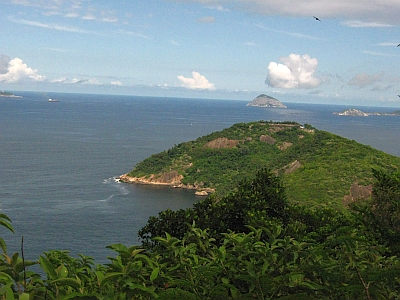 The views of Copacabana Beach, Christ the Redeemer, Botofogo Marina, Gauanbara Bay and Cotunduba Island in the distance were spectacular. We looked above us to inspect the route and noticed a small roof section. When I climbed to it my feet swung out from underneath me and the ground below dropped away; a sense of exposure and panic overtook my mind. I gripped the cable tightly and hauled myself into a small cave above and waited for Carole.
The views of Copacabana Beach, Christ the Redeemer, Botofogo Marina, Gauanbara Bay and Cotunduba Island in the distance were spectacular. We looked above us to inspect the route and noticed a small roof section. When I climbed to it my feet swung out from underneath me and the ground below dropped away; a sense of exposure and panic overtook my mind. I gripped the cable tightly and hauled myself into a small cave above and waited for Carole.
She soon arrived at the roof, and with surge of energy she seized the cable with monkey-like grip and quickly pulled herself up. We stood in the small cave eating a fruit bar as a cable car passed overhead; an image of James Bond hanging with one hand to the side of the cable car while battling away Jaws flashed into my mind. I laughed, smiled and waved to the people in the cable car. They waved back and took some photos.
Carole left the shaded cave and pulled herself up the cable for the next pitch while I belayed her and gazed back at Rio. I hooted and hollered as she scampered along until she disappeared after climbing over a ledge. I quickly followed, and each time I brushed up against the rock the invigorating granite particles charged my being. Finally, another 150 feet later I reached a groove on a small ledge.
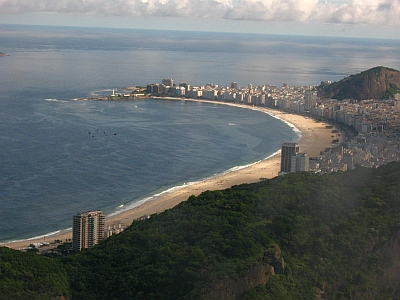 The last 250 feet of the route followed a slabby groove on the cliff face and looked like you could run up it without safety gear, if not for the fact that you were 650 feet above the ground. Carole said her hands were starting to get a little raw. I looked at mine. They were brown from the rust of the steel cable, and I thought gloves definitely would have been a good idea. We left the groove and I quickly scrambled up the last section of the route, towing my safety line along the cable and neglecting to use any carabineers. I scrambled up the rock until I arrived at a grassy ledge next to the cable car station: I had made it to the top.
The last 250 feet of the route followed a slabby groove on the cliff face and looked like you could run up it without safety gear, if not for the fact that you were 650 feet above the ground. Carole said her hands were starting to get a little raw. I looked at mine. They were brown from the rust of the steel cable, and I thought gloves definitely would have been a good idea. We left the groove and I quickly scrambled up the last section of the route, towing my safety line along the cable and neglecting to use any carabineers. I scrambled up the rock until I arrived at a grassy ledge next to the cable car station: I had made it to the top.
I waited for Carole and then we climbed over the metal railing and followed a few stairs to the viewing platform of the summit. Once we arrived at the summit there was a restaurant with a patio that served hot snacks and cold drinks. Now this was the way to climb. We bought two cold caipirinhas, sat in comfy chairs and toasted the thrilling adventure we spent above Rio de Janeiro.
I noticed that my hands were a bit pink from the cable but the cold cocktail felt good on them. Carole and I felt energized and full of adrenalin, and we were buzzing from the climb. We sat at the patio for an hour enjoying the afternoon sun, cold drinks and the views of Rio’s beaches. Finally, we decided to take the easy way back to the bottom: riding the cable car, which took all of 20 minutes. Not exactly the preferred mode of transportation for an international spy, but I was content knowing I had already fulfilled by Bond dreams for the day.
By James Cruikshank

About the Author
 James Cruikshank is a freelance writer, urban recycler and abuser
James Cruikshank is a freelance writer, urban recycler and abuser
of languages. He has traveled extensively; climbing mountains in
Argentina, Bolivia, and Scotland; paid baksheesh and bribes in Mexico, Honduras, and India. He survived a very traumatic and painful elephant trampling in Nepal and worked abroad as a kayak guide, movie extra, and house sitter covering 38 countries on 6 continents.
The post Climbing Rio’s Sugar Loaf James Bond Style appeared first on The Expeditioner Travel Site.
]]>The post Ideas For Travel To South America This Fall appeared first on The Expeditioner Travel Site.
]]>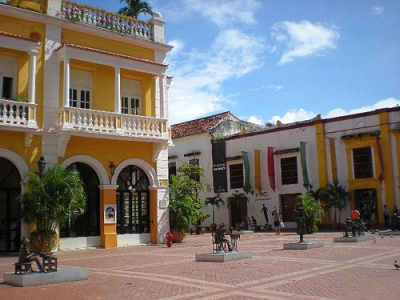
Is there nothing better than shipping off on a red-eye flight in the depth of a cold winter night and arrive, half-a-day later far on the other side of the Equator (assuming you’re coming from the north) in warm South America? Plants are budding, locals are excited about the onset of summer, and you’re just glad to spend a week or two far from any vestiges of black snow banks and flu-infested workplaces.
With that in mind, Condé Naste Traveller (or what I like to sometimes call Condé Nasty if they let me) decided to ask South American travel expert Sue Lyall about where to go, what’s hot, and where to stay in the continent. Here are the highlights.
Hottest Country: Argentina, for its hiking, good eats, llamas and wide variety of activities in this large swath of land. You had me at llama.
City to Visit: Cartagena, because of its historic old city, its nightlife and its beaches. And also because people, despite everything that’s been written about the country, don’t realize how amazing Colombia is, so it’s not totally overrun by tourists yet. It will also make you realize how completely unaesthetic your neighborhood is back home.
Best Place to Stay: Pousada do Toque hotel in Alagoas in Brazil, because it’s located on the ocean just north of Bahia, there are manatees there (enough said!) and the area is still pretty unknown, thus once again, not too many tourists.
The post Ideas For Travel To South America This Fall appeared first on The Expeditioner Travel Site.
]]>The post What Does The U.S. Have Against Brazilian Tourists? appeared first on The Expeditioner Travel Site.
]]>
Let’s face it, the U.S. economy is limping along at best, and the last thing it should be doing is making it difficult for people outside of the country to come and spend money here. Take Brazil for example, a nation which spent a whopping $5.9 billion in the U.S. last year. Not that the U.S. made it easy to do so, as Time pointed out in a recent exposé that detailed the difficult process Brazilians, and Latin Americans in general, have in making their way to America.
Instead of rolling out the red carpet for the travelers from the increasingly wealthy South American nations, the U.S. makes Brazilians — and every other Latin American nationality — undergo a lengthy and expensive visa-application process that takes months of planning and can cost thousands of dollars in travel, lodging, food and other expenses — all before leaving the country.
The article notes how there are only four consular offices there — one in Brasilia, Recife, Rio de Janeiro and São Paulo — this, a country of 190 million people and basically the size of the U.S. Wait times for visa interviews, which is about 30 days around the world, can take up to 141 days, and São Paulo alone processes 2,300 visas a day, making it the busiest consulate office in the world.
Perhaps the solution is to allow Brazil into the U.S. visa waiver list, something it allows for numerous other countries. But it turns out Brazil is not on that list, in fact, no Latin American country is.
There are currently 36 countries on Washington’s visa waiver list, but none of them are in Latin America. Some argue it’s hampering the U.S.’ economic growth and global competitiveness. For example, Chilean tourism to the United States is down more than 30% from 10 years ago, while globally the number of Chileans traveling overseas to other countries is up 50%.
And if you think this issue doesn’t affect you, you’re wrong. Chances are you or someone you know is looking for a job, and the article notes how allowing Brazil and Chile alone into the waiver list would, by some estimates, create 1.3 million new jobs and bring in $858 billion into the U.S. economy by 2020. I think the time’s ripe for a consulate construction boom.
The post What Does The U.S. Have Against Brazilian Tourists? appeared first on The Expeditioner Travel Site.
]]>The post Brazil May Not Be Ready For The 2014 World Cup (Or The Olympics) appeared first on The Expeditioner Travel Site.
]]>
Having just returned from Barcelona — a city that was immensely impacted by hosting the Olympics — I saw firsthand and heard in almost every story about the history of the city how hosting the Olympics helped transform the city by creating public beaches, cleaning up once dingy neighborhoods, and restoring a pride to a city that few who have visited in the past 20 years could hardly imagine hadn’t always been present.
Which makes recent news that many are predicting Brazil will be ill-prepared as host for the 2014 World Cup and the 2016 Olympics all the more disheartening. CNBC is reporting that Brazil is drastically behind schedule in its construction of the 12 stadiums in 12 different cities ahead of the World Cup, “nevermind airports, local transport and other infrastructure required for when 600,000 visitors descend upon the country.” To date, Brazil has not spent even one-third of the $20 billion in infrastructure spending earmarked for the event. And with the Olympics just two years later, many are wondering whether the Brazilian adage, “Why do today what you can do tomorrow?” is coming into play.
Many point to the root of the problem as financing, with concerns from the state-owned development bank BNDES that the stadiums are not financially self-sufficient and would lose money following the tournament. This compounded with the fact that in its initial bid, plans were for much of the financing to come from the private sector, a scenario that has not come true.
In an ominous warning, CNBC quotes Anand Hemnani, director of Madison Williams investment bank in Sao Paulo who warned that the World Cup is potentially going to be a disaster. “If you look at the state of our airports, the state of our highways and the state of our urban mass transit you’ll see that you simply cannot have more people using the system than we already have now, let alone the demand that comes in from these other events such as the World Cup and the Olympic Games.”
Here’s hoping for a strong second half from the Brazilian team.
The post Brazil May Not Be Ready For The 2014 World Cup (Or The Olympics) appeared first on The Expeditioner Travel Site.
]]>The post The Pulse (Or Lack Thereof) Of Boipeba, Brazil appeared first on The Expeditioner Travel Site.
]]>
Brazil. The word alone conjures visions of dark-haired, curvy women, swaying to samba in the sultry heat of a mid-summer’s night, clinging to their equally gorgeous counterparts on the coarse sands of Copacabana beach. The country just sort of exudes this sexy, vibrant, beautiful vibe to the average pale-faced foreigner, creating a seductive allure that has many of us secretly wishing we could be honorary Brazilians.
The chaotic streets of Rio and San Paulo crawl with swarms of people and impatient vehicles, all swiveling and swerving in a poetic motion that screams: “It’s alive up in here!” It almost seems like you can’t escape the loud pulse that beats through Brazil — unless you head somewhere like Boipeba, a remote island near Salvador, the capital of the state Bahia. Here, the magical Brazilian vibe lies in the undisturbed landscape and semi-primitive accommodations that make a visit to this island a very unique — very unconnected experience.
The recent New York Times article on Boipeba notes how“Boipeba may lack glamour, but it compensates with ridiculously perfect weather and the kind of vacant, palm-shrouded beaches that make you forget about the pleasures of air-conditioning.” And it’s not all about lounging around here. “For those needing more diversions, there is a rare swath of unmolested Atlantic rain forest to be explored, acres of coral reef and picturesque colonial-era villages where the fish you glimpsed during your afternoon snorkel could very well end up on your dinner plate.”
In Boipeba visitors leave the pulse of the city behind and embrace the heartbeat of nature. Here, many of the accommodations don’t have Internet, phone service, or television, and electricity may even be sporadic depending on the day, but that is kind of the point of visiting this “ecologically fragile haven.” Charles Levitan, owner of Pousada Santa Clara, a cluster of white-washed cottages on Boipeba, warns any perspective guests that, “If you can’t live in the moment, this isn’t the place for you.”
Although there are flights that run from Salvador, most visitors choose to take the four-hour trip by ferry, which arrives where most of the island’s accommodations lie beachfront. Then it’s just another day in paradise — swimming, snorkeling, strolling on empty stretches of beach, and maybe even a trip to the mangroves to absorb the fantastic natural scenery. After all, it is Brazil, and even its quieter corners are simply magnetic.
[Photo by Thowa_uk/Flickr]
By Maria Russo

About the Author
 Maria Russo is a freelance writer who loves natural wonders, good eats, ethical travel, and boutique hotels. Her work has appeared on the Huffington Post, USA Today.com, People.com and A Luxury Travel Blog, among others.
Maria Russo is a freelance writer who loves natural wonders, good eats, ethical travel, and boutique hotels. Her work has appeared on the Huffington Post, USA Today.com, People.com and A Luxury Travel Blog, among others.
When Maria is not writing for her all-time favorite site (that would be The Expeditioner), she spends her time blogging about foreign jaunts and delectable food experiences for her site: Memoirs of a Travel & Food Addict. She is also up to no good on Twitter (@traveladdictgrl, @expedmaria).
The post The Pulse (Or Lack Thereof) Of Boipeba, Brazil appeared first on The Expeditioner Travel Site.
]]>The post Video: A Behind-The-Scenes Visit To A Brazilian Samba School appeared first on The Expeditioner Travel Site.
]]>You don’t have to be in Brazil this March 4th to have your very own Carnaval experience. The samba schools that compete for Carnaval honors in São Paulo hold open rehearsals in the months leading up to the big night. For travelers it’s a once-in-a-lifetime opportunity for an up-close experience most people only see from the stands.
And if you are going to be in town for Carnaval, it’s a chance to buy a costume and join the parade. In the video above, I spent an evening with the Perola Negra Samba School from São Paulo’s Villa Madalena neighborhood. There are plenty of samba schools all over São Paulo getting ready for Carnaval, and you can check out their schedule and and join in the fun every night of the week — that is, if you’ve got the energy to keep up.
By George Suarez

About the Author
 George Suarez is a travel writer and television producer working out of New York and São Paulo. George has traveled throughout the United States, South America and Asia. His work as an award-winning video producer has taken him from Broadway stages to Afghan prisons to exorcism rites to US defense laboratories. He has an intense phobia of insects.
George Suarez is a travel writer and television producer working out of New York and São Paulo. George has traveled throughout the United States, South America and Asia. His work as an award-winning video producer has taken him from Broadway stages to Afghan prisons to exorcism rites to US defense laboratories. He has an intense phobia of insects.
The post Video: A Behind-The-Scenes Visit To A Brazilian Samba School appeared first on The Expeditioner Travel Site.
]]>The post Exploring Recife Away From The Famed Coastline appeared first on The Expeditioner Travel Site.
]]>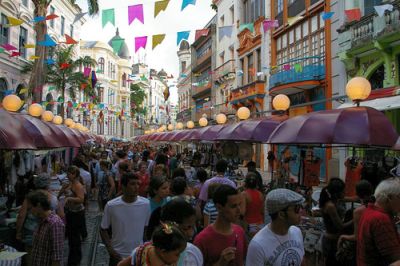
It’s probably safe to say that if you really want to get to know a city, stay away from where the scenic beaches and high-rise hotels are located. Far from the pulse of the city, these upscale, over-developed, tourist-friendly locales not only attract the crowds of tourists you’re likely trying to avoid in the first place, but also house the bland restaurants and petty criminals that are attracted to this vulnerable crowd.
Instead, look for the neighborhoods with the street vendors, with the businesses where the owners sit out front chatting with neighbors, with the restaurants that don’t even bother putting their name out front. Here’s is where you’re going to find the “real” city, not to mention a better time.
And, like many other places around the world, this is also true for Recife, Brazil, the country’s fourth-largest city, and home to one of the region’s most visited beaches, Boa Viagem beach in the tony neighborhood of Boa Viagem. But, as Travelmag points out in a recent trip to the city, a trip to Boa Viagem isn’t really Recife. In fact, “Boa Viagem could be almost anywhere in Brazil, or even Florida [gasp!].” Instead, they suggest heading downtown, an area once flush with money during its colonial heyday as a major exporter of sugar. Of course, that was several hundred years ago, and things have changed.
Such wealth is long gone now, and much of today´s downtown Recife is a faded, crumbling relic. But not only that – it is a city that pulses with human life. There are people everywhere, whether buying fruit and vegetables, fresh mamaõ and macaxeira brought in that morning from the parched countryside, or talking, for recifenses love to talk as much as they love to do anything, or eating, which is the one thing recifenses love to do more than talk.
I wonder what our friend, Thomas Kohnstamm, had to say about the city during his infamous trip there researching the Northeast for Lonely Planet’s Brazil guide? Turns out he liked it, noting its “rich traditional side” and its reputation as home to “some of Brazil’s best folk art, including paintings and sculpture, dance, music and festivals.” And even he has some reservations about Boa Viagem. Disappointed that “very few people actually enter the water,” he recommends (or somebody did) heading south about 14 km to Praia Enseada dos Corals, Praia Gaibu, and Praia Calhetas for cleaner water. And fewer high-rise hotels, always a good thing.
[Image: bom jesus by gjofili/Flickr]
The post Exploring Recife Away From The Famed Coastline appeared first on The Expeditioner Travel Site.
]]>The post Exploring The Other Rain Forest In Brazil appeared first on The Expeditioner Travel Site.
]]>
The Amazon — with its 1.4 billion acres — may get all the glory when it comes to Brazilian rain forests, but visitors to Rio and the southern part of the country have just as good of access to a rain forest, without having to travel the several hours to the north. We’re talking about the Atlantic rain forest, or Mata, a long stretch of tropical wonder that extends from Sao Paulo and past Rio to the south, and which offers ample opportunities for travelers to experience all that a South American rain forest has to offer, and be back in the urban jungle all in the same day, as the San Fran Chronicle discovered.
For example, visitors to Rio can experience Mata by hiking the trail at Sugarloaf Mountain (where most tourists stick to the cable cars to reach the top). “Choose your trails right, and you can start the day tramping through protected Mata in the company of toucans and howler monkeys and finish it sipping caipirinhas on the beach with Brazil’s buff and beautiful.”
Or, about three hours south of Rio is the Bay of Paraty, “a network of jungle, inlets and secluded beaches,” where high-end restaurants and hotels are surrounded by, literally, miles and miles of untouched rain forest, home to countless species of wildlife. Here, one trail through the forest leads you from the city and to Praia do Sono (Sleepy Beach), a beach that will make you forget all about returning back to the city.
The post Exploring The Other Rain Forest In Brazil appeared first on The Expeditioner Travel Site.
]]>The post A Hammock Cruise: Getting Into The Swing Of Things appeared first on The Expeditioner Travel Site.
]]>
There are some people who choose to remain busy, and there are those that are able to take things as they come. Then there are those people who can do both. Finding a balance may start in a hammock.
Figuring out how to relax while away is probably one of the biggest obstacles for most travelers (next to blowing their budget). Many feel a constant tug to see and do as much as possible, and others are content living a “normal” life. Still others are able to find a balance between the two. It’s more about the person and what he or she wishes to experience.
But, what if you are on a cruise that is stripped of all the “luxuries” that we associate with a cruise ship? What would you do if your only option for rest was a hammock? Such was the case for The Frugal Traveler as he dreamed up a business plan for workaholics, all from the comfort of one such hammock as he “cruised” down the Madeira River on a four-day, four-night trip from Manaus to Porto Velho near the Bolivian border, during his current trek from South America to New York:
My clients would be forced to spend all day doing nothing but lying on a hammock, taking in the breeze, eating three hearty (if monotonous) meals a day, looking out for surfacing river dolphins and making new friends without even trying. There’d be no clocks, no cellphone signals except for a few moments as you pass small cities, and certainly no computers.
I’d probably upgrade the bathrooms a few steps above wretched, though, and I’d certainly charge more than $17 a day.
I wonder if it was the sway of the hammock or the people and scenery — or all of the above — that made the experience more enjoyable? It could have been anything, but there is something so easy and reassuring about the hammock: It rocks you back and forth, stops you from fidgeting.
It definitely made me think that inventing a portable pop-up hammock might be beneficial for everyone.
By Brit Weaver

About the Author

Toronto born and based, Brit is an avid leisure cyclist, coffee drinker and under-a-tree park-ist. She often finds herself meandering foreign cities looking for street eats to nibble, trees to climb, a patch of grass to sit on, or a small bookstore to sift through. You can find her musing life on her personal blog, TheBubblesAreDead.wordpress.com.
The post A Hammock Cruise: Getting Into The Swing Of Things appeared first on The Expeditioner Travel Site.
]]>The post Paradise In Brazil: Salvador appeared first on The Expeditioner Travel Site.
]]>
Brazil: the name itself conjures images of astounding beauty. As Latin America’s largest country, not only is the terrain diverse — jungles, beaches and mountains — but the cities, too.
Usually, those who have not ventured to the Portuguese-speaking country, tend to think of São Paulo, the booming metropolis, or Rio de Janeiro, with its favelas set in the hills overlooking Copacabana beach and made famous from the movie City of God.
However, especially in mainstream media, we barely get to hear or read about one’s experience in the northern cities, more specifically Salvador. Luckily, The Independent recently took an in-depth look at the country’s first capital city.
Salvador carries a rich history as its past is based on the pursuit of riches. As the article points out, the city and the surrounding cities — all a part of the state of Bahia — were the main points of Brazil’s trade in tobacco, sugar and slaves. Salvador boasts a church that epitomizes this epoch of decadence (and exploitation) with the Sao Francisco that is lined with 800kg of gold.
After reading the rich descriptions of the sights and people that I can’t do justice by trying to summarize, believe me, you will change your 2014 Brazilian itinerary to include Salvador.
By Brit Weaver

About the Author

Toronto born and based, Brit is an avid leisure cyclist, coffee drinker and under-a-tree park-ist. She often finds herself meandering foreign cities looking for street eats to nibble, trees to climb, a patch of grass to sit on, or a small bookstore to sift through. You can find her musing life on her personal blog, TheBubblesAreDead.wordpress.com.
The post Paradise In Brazil: Salvador appeared first on The Expeditioner Travel Site.
]]>The post Why I’m Listening To Seu Jorge Right Now appeared first on The Expeditioner Travel Site.
]]>Someone recently left a comment on my YouTube Argentina video asking me why I would play Seu Jorge, one of Brazil’s megastars, in the background of a video about Argentina. My answer? It’s Seu Jorge. You don’t question these things.
One thing I feel like I don’t do enough of on the site is to write about artists from around the world. (As a side note, I promise to never use the pejorative label: “World Music.” As if any music that’s not in English or from the United States should simply be clumped together in some sort of amorphous group and not given the respect to at least distinguish its origin. Sorry, it’s kind of a pet peeve of mine. Kind of like watching the Olympics in America where you’d be hard-pressed to realize that any countries outside of the U.S. actually compete.)
Today’s March 2nd, and every year around this time, as the winter drags on but spring feels just around the corner, I find myself gravitating towards music found south of the Equator. Today I was streaming a steady supply of Seu Jorge, the favela-raised musician, actor (ever heard of a little movie called “City of God” or “The Life Aquatic”?), and former beach performer.
Brazilian by birth, Jorge’s music, like the country itself, is a hodgepodge of styles ranging from the drum-heavy beats of the North, to an updated take on tropicalia, or as some have dubbed, neo-tropicalia. Either way, Jorge’s infectious rhythms and transcendent melodies will stay in your head long after you pushed stop.
In a 2006 CNN interview, Jorge recounts his incredible life story and how he became a musician. (Beware, this is one of those stories that makes you realize that you should quit whining about your own life and realize how easy you’ve had it.)
Ever since I was 10 years old my dream was to be a musician. My father was a musician, a rhythmist playing tambourines, drums… he worked in one park, playing the stage for maybe three or four years and I used to go and see him play. After my brother was murdered I ended up living on the street because my mother needed to sell my home. While I was on the street I met my musical partner, Gabriel Moura, who was playing guitar and singing in bars and I learnt to play from him. Two years later I joined a theatre company because Gabriel Moura invited me for a singing audition. I never thought about making money. I started playing music as a passion. After my brother died I was very, very hungry, very, very sad and I wanted revenge. My friend put hope in my heart. I changed my mind and I found a friend with the music and I played guitar for the people. My first band, Farofa Carioca, played on the beach for free.
Incrível!
The post Why I’m Listening To Seu Jorge Right Now appeared first on The Expeditioner Travel Site.
]]>The post Where To Find The 10 Best Beaches In Brazil appeared first on The Expeditioner Travel Site.
]]>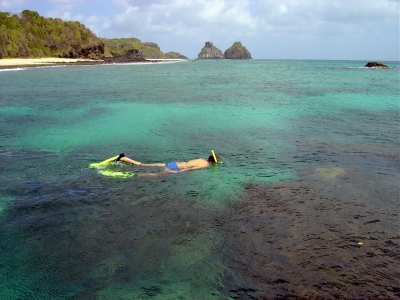
The Guardian compiled a list of the top 10 beaches in Brazil as chosen from some of the world’s foremost experts on travel to Brazil. Not surprisingly, many looked far beyond the famed coastline of Rio to come up with a list of beaches as far-flung as the river beaches in Alter do Chao deep in the Amazon rainforest, to Taipus de Fora on the Maraú Peninsula in the state of Bahia where the snorkeling is among Brazil’s best.
At #2 is is the eco-paradise of Fernando de Noronha, one of Brazil’s best kept secrets (outside of Latin America that is). A UNESCO World Heritage Site, this 21-island archipelago is held in the “brazilian imagination somewhere not far from Shangri-la, Atlantis and paradise. People glaze over when you mention it: eyeballs tend to roll upwards in that universal gesture of delight.” Slow down now, are we still talking about a beach here?
The post Where To Find The 10 Best Beaches In Brazil appeared first on The Expeditioner Travel Site.
]]>The post Falling For The “Other” Brazil In Minas Gerais appeared first on The Expeditioner Travel Site.
]]>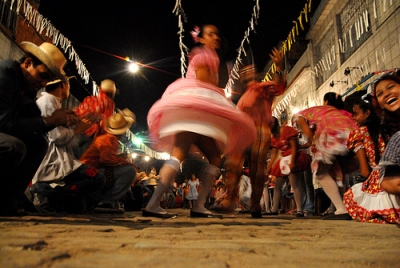
A taste of true Brazilian culture is waiting for you just a short trip from Rio in Minas Gerais.
By Lindsey Witthaus
When most people picture Brazil they usually conjure up images of Rio de Janeiro and its many postcard-worthy locations such as Sugar Loaf Mountain and the famous Ipanema and Copacabana beaches. But let’s be honest, these sites are travel-bait, crawling with tourists all year round. In fact, whenever friends or family have visited me in Brazil, we almost always made the trip there. I’m not saying there’s something wrong with wanting to visit Rio — I was personally obsessed with the idea before my first trip to Brazil — however, why stop with Rio when there’s so much more to see just a short trip outside of the city?
When my two best friends came to visit me in Brazil last summer, I insisted we beat the Rio scene and take the short trip north into the state of Minas Gerais for an authentic glimpse of Brazil’s rural — or Caipira — culture. It was one of the best times of the year to go; during the months of June and July, all the little towns come alive for the annual celebrations, Festa Junina and Julinha. These parties are far from your average church function. Held in small communities or in the courtyard of Portuguese Colonial churches, these blowouts boast live music from bands playing well into the night. You can try an array of special drinks, including hot chocolate with cognac, or a favorite mixed drink consisting of tropical fruit blended with sweetened condensed milk and vodka or cachaça (sugar-cane alcohol). Tents are full of locals selling seasonal food such as roasted corn and the traditional canjiqua: a warm, sweet concoction, best described as a maize porridge.
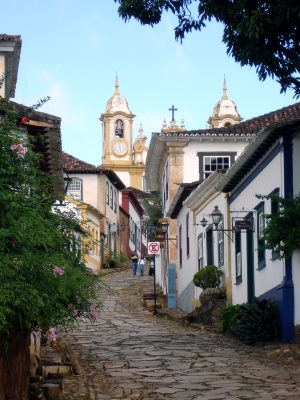 If you’re staying in Rio, you can take an overnight bus into Minas to the stunningly beautiful city of Ouro Preto. A UNESCO World Heritage Site and former boomtown, the city was settled by the Portuguese back in 1698 and quickly swelled with European fortune-seekers hoping to strike it rich during the region’s gold rush. When my friends and I landed in Ouro Preto early in the morning, the city was covered in a thin mist. We attempted to make our way to our hotel by foot but quickly became lost on the steep, cobblestone roads and dead-end sidewalks (I recommend taking a taxi). Ouro Preto is a popular destination for Brazilians and is full of quaint pousadas (traditional inns) and colonial hotels.
If you’re staying in Rio, you can take an overnight bus into Minas to the stunningly beautiful city of Ouro Preto. A UNESCO World Heritage Site and former boomtown, the city was settled by the Portuguese back in 1698 and quickly swelled with European fortune-seekers hoping to strike it rich during the region’s gold rush. When my friends and I landed in Ouro Preto early in the morning, the city was covered in a thin mist. We attempted to make our way to our hotel by foot but quickly became lost on the steep, cobblestone roads and dead-end sidewalks (I recommend taking a taxi). Ouro Preto is a popular destination for Brazilians and is full of quaint pousadas (traditional inns) and colonial hotels.
As soon as you head out onto the narrow streets of the town you encounter the uniqueness of Ouro Preto. European architecture is still evident today in the many quaint shop fronts and grandiose churches that are found around nearly every bend. At times it’s almost difficult to believe that you’re in Brazil. You could easily spend days on end exploring the city’s museums and beautiful colonial churches. After several trips doing just that myself, I can recommend the town’s three most famous churches: São Francisco de Assis, Nossa Senhora do Rosário, and Matrix Nossa Senhor do Pilar. Filled with gold-leaf designs and rococo-style paintings, these cathedrals are by far the most ornate and historically important.
While in Ouro Preto, it’s easy to partake in some well-loved Minas culture. The region is famous for its fresh cheese and homemade sweets. My favorite is the famous Romeo and Juliet combination: a snack consisting of a combination of salty, fresh Minas cheese and goiabada (a sweet Guava paste). Given its history, it’s no surprise that Ouro Preto is known for its collections of semi-precious stones. My friends were thrilled by all the gem shops found all around town. We must have spent hours trying on fun pieces and bargaining for deals on gemstones. With stomachs rumbling we headed to a buffet-style restaurant — one of the best ways to get a taste of the wide variety of Minas delicacies. We dug into the farofa, a mix of sautéed vegetables with little pieces of meat and manioc flour; sautéed squash and couve (a dark leafy veggie); traditional rice and garlic-infused beans; as well as various cuts of pork, chicken and beef.
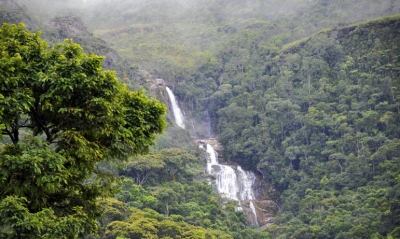 From Ouro Preto there are several day trips possible, including Lavras Novas, a picturesque small town situated on the ridge of a hill and home to only about a thousand people. Once almost entirely ignored by outsiders, Lavra Novas has become a popular destination for adventure seekers and is frequented by university students and families from nearby Ouro Preto, especially during the holidays. The first time I landed in Lavras Novas the village was a veritable ghost town, not unusual for the middle of the week. Bring your hiking shoes to explore though, the town literally dead ends at a trailhead. From the beginning of the trail, you can weave in and out of the nearby lush forests and go in search for the town’s famous waterfalls.
From Ouro Preto there are several day trips possible, including Lavras Novas, a picturesque small town situated on the ridge of a hill and home to only about a thousand people. Once almost entirely ignored by outsiders, Lavra Novas has become a popular destination for adventure seekers and is frequented by university students and families from nearby Ouro Preto, especially during the holidays. The first time I landed in Lavras Novas the village was a veritable ghost town, not unusual for the middle of the week. Bring your hiking shoes to explore though, the town literally dead ends at a trailhead. From the beginning of the trail, you can weave in and out of the nearby lush forests and go in search for the town’s famous waterfalls.
A 40-minute bus ride down the highway or a train ride through the mountains from Ouro Preto is colonial Mariana, the oldest town in Minas Gerais. The rickety train trip is a worthy splurge, but for those looking to save some money, the bus is a cheaper option. The train lets you off in the village center, close to the churches and colonial buildings. After you’re done taking in this fabulous little town and a eating a big churrascaria meal for lunch, you can catch the bus to Minas do Ouro. Located on the edge of town, this gold mine is one of the largest in Minas’s history. Now closed to mining, the mine is open for visitors who can take a ride in a cart down into the depths of the enormous mine and, incredibly, go scuba diving in the underground rivers.
These are just a few of the many options in Minas. For the more adventurous travelers, head south to Parque Estadual da Serra do Brigadeiro, a state park with astoundingly green and lush hills. Along the road are plenty of small towns, but you’ll mostly pass by communities of grouped houses and coffee fields. I’ve met many backpackers that found their way to these small communities, and most told me that they came away with some of their best memories of Brazil from these trips. I myself caught the Minas bug after visiting and ended up living on a farm for five months in a rural community. Who ever knew that the rural, caipira culture could have such allure?

For more information on Minas experiences and travel advice visit Lindsey’s blog.
The post Falling For The “Other” Brazil In Minas Gerais appeared first on The Expeditioner Travel Site.
]]>The post Flavors Of Brazil appeared first on The Expeditioner Travel Site.
]]>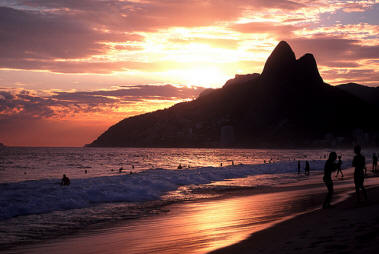
By Caroline Shin of Argentina’s Travel Guide
A tropical celebrity playground in the 1950’s and 60’s, Brazil has enchanted Brigitte Bardot and Rita Hayworth, and now more recently, served as a backdrop for Snoop Dogg’s “Beautiful” music video in 2002. Only a stone’s throw away from Argentina, a flight to Rio de Janeiro takes only three hours from Buenos Aires. I, like many others before me, couldn’t resist the temptation to explore the flavors of South America’s most seductive country.
My days started out with deliciously cold coconut water from the whole coconut. Afternoons were sweetened by fresh passion fruit juice. As I beach-hopped through Rio de Janeiro, Buzios, Cabo Frio and Ihla Grande I was enchanted by the culinary exoticism of words I hadn’t heard before. I had trouble understanding even the English-version menus that were dressed with words such as catupiry, guaraná or moqueca.
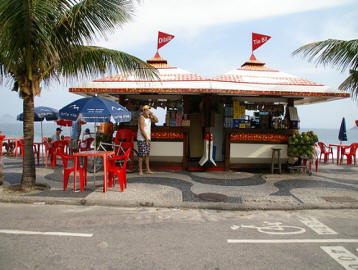
Strolling through the multitude of fresh produce stands and vendors at the open fruit and vegetables market in Ipanema, I was lost amongst the mix of Portuguese and culinary vernacular, and the sights, sounds and smells of the strangest and funniest looking goods. I found myself in a world of persimmon, coconut, guava, cassava, passion fruit, star fruit, acerola and fruta do conde.
This curious offering found its way to the juice bars that prevailed throughout my travels. Açaí (pronounced ah-SIGH-ee) was most prominent with huge banners sprinkling the sidewalks of Rio de Janeiro and the dirt roads of Ihla Grande. Served as a brilliant reddish-purple iced smoothie in a little plastic cup, açaí is nature’s super food, packed full of antioxidants, amino acids and essential fatty acids and harvested in the palm trees of Brazil. (As a side note, I met a fellow traveler who had caught the now-popular dengue fever and was drinking açaí everyday to recuperate.) The sweet, sour and nutritious chlorophyll-and-orange juice was another one of my favorites.
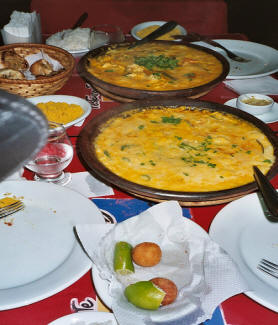
Brazilian cuisine in and around Rio also specializes in fish and seafood which comes whole — fried or roasted — or in soups and stews, with a side of rice and black beans. A seafood fanatic, I was on a constant search for Bahian food from the northeast of the country. With ties to colonial Brazil, Bahian cuisine evolved from plantation cooks who improvised on African, Indian, and traditional Portuguese dishes with local ingredients.
Typical dishes include vatapá (creamy paste of bread, shrimp, coconut milk, palm oil and nuts), caruru (a stew of okra, onion, shrimp, nuts and palm oil), acarajé (a deep-fried ball of white beans) and moqueca (slow-cooked stew of seafood, onions, tomatoes, cilantro and chili pepper). I enjoyed a taste of each dish, and more, at a buffet-style lunch at Siri Mole e Cia in Copacabana after a trek up Corcovado Mountain to see Christ the Redeemer earlier that day.
In Rio, feijoada (a black bean, pork and beef stew) is popular especially as a Wednesday or Saturday lunch. Prepared over a slow fire in a thick clay pot, feijoada comes with sides of rice, couve mineira (chopped and stir-fried collard greens), farofa (roasted cassava flour), and hot pepper sauce (a lovely addition to my collection of hot sauces, it consists of whole red malagueta chiles steeped in palm oil or olive oil for a month or so). The Adega da Velha in the bay area serves up some of the best feijoada in town.
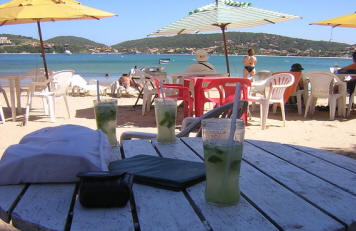
Though hard to choose, I had one of my most memorable dining experiences at the beach-side Nannai Bar in Buzios, a vacation hot spot for many wealthy Argentines. The sun was setting over the nearly secluded Ferradura Beach; the waves were lapping lightly against the shore and I had gleefully ordered a dozen oysters on the half-shell. As I sat sipping my cold Itaipava beer, I saw a fisherman drag a net full of oysters into the bar, and moments later, heard shucking noises. The waiter came by after a few minutes with a plate full of freshly-caught-and-shucked oysters! They certainly weren’t the prettiest oysters I’ve seen, but, boy, were they tasty. Mild and slightly sweet they were adorned only with a few drops of squeezed lemon slices and a couple dabs of hot sauce.
Aside from the traditional Brazilian cuisine, I also made several stops at the popular and trendy sushi chain Koni, which serves up only cones or hand rolls of tuna, salmon and shrimp with ingenious press-down bottles for soy sauce with wasabi or teriyaki sauce. For other afternoon and evening snacking during pit stops between beaches, I hopped into the many bakeries aligning Rio’s streets for fried codfish balls, ricotta and spinach balls, pastels of meat or cheese and cheesy bread.
Having now stepped out of the golden sun and translucent turquoise waters of Brazil and into the crackling leaves that signal the onset of autumn in Buenos Aires, I have an incredible longing for carioca food, music and style. But I can actually find authentic flavors of Brazil here in Buenos Aires. The nightclub Maluco Beleza emanates with the sounds of samba and zouk, a new-found favorite of mine. And I can revisit the tastes of feijoada and caipirinhas at Me Leva Brasil and Maria Fulô in the neighborhood of Palermo.

This article originally appeared with our friends over at: Argentina’s Travel Guide, the internet’s premier online guidebook to Argentina featuring articles, suggested destinations, photos, a forum, and a free Pocket Guide Series.
The post Flavors Of Brazil appeared first on The Expeditioner Travel Site.
]]>